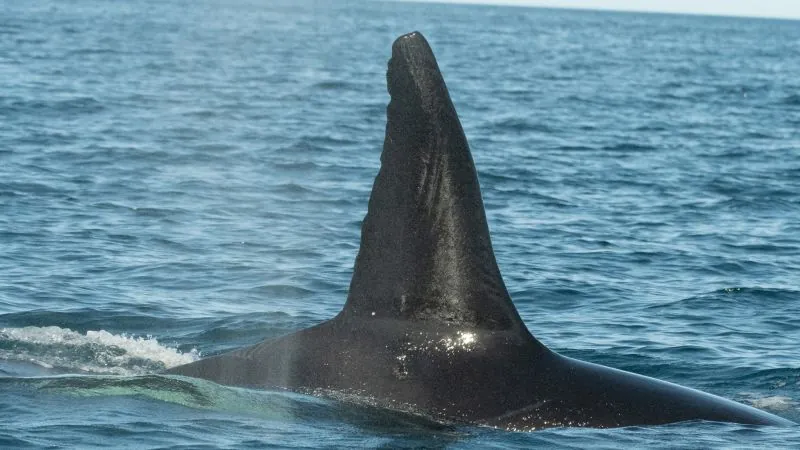
Orcas Unleash Ingenious Hunting Tactics on Whale Sharks, Revealing Ocean's Raw Predator-Prey Dynamics!
2024-11-29
Author: Ming
Introduction
Orcas, often referred to as "killer whales," are making waves in the Pacific Ocean with their latest hunting strategy for capturing the largest fish in the world: the whale shark. Recent research unveiled how a pod of orcas off the coast of Mexico has developed a remarkable technique to target and overpower these gentle giants, which can grow up to an astonishing 18 meters (60 feet) in length.
Research Findings
While earlier anecdotes hinted at this predatory behavior, scientists have now caught the action on camera in unprecedented detail. This groundbreaking study analyzed four separate hunting events, showcasing the orcas’ coordinated efforts in subduing their prey. The hunts primarily involve younger whale sharks, typically ranging from 3 to 7 meters (10 to 23 feet) in length, which makes them particularly susceptible to the orcas’ hunting prowess.
Vulnerabilities of Whale Sharks
Francesca Pancaldi, a pivotal researcher in this study from the Centro Interdisciplinario de Ciencias Marinas in Mexico, pointed out some of the whale shark's vulnerabilities. "The whale shark has the smallest brain when compared to its massive body—a brain roughly the size of an egg," Pancaldi stated. With a notably docile nature and tiny teeth that offer no defenses, the whale shark's primary means of evasion lies in its ability to dive deep into the ocean’s depths, potentially reaching 2,000 meters.
Orcas' Hunting Techniques
The hunting tactics of the orcas were strikingly efficient. Documented between 2018 and 2024, videos and images revealed the orcas initiating their hunt with forceful body slams against the whale shark. Following that, they expertly flipped the shark onto its back, inducing a state known as "tonic immobility," where the creature becomes temporarily paralyzed by fear. This vulnerable position rendered the whale shark unable to defend itself, allowing the orcas to methodically target its abdomen, ultimately leading to consumption.
Significance of the Study
This fascinating behavior aligns with the known dietary preferences of orcas, who are classified as apex predators. They not only hunt whale sharks but also target other marine life, including seals, dolphins, and various shark species. In fact, Sarah Teman, a doctoral student from the University of Washington, emphasized the significance of this study. "This is the first documented evidence of such behavior involving whale sharks, the world's largest sharks. It's a remarkable discovery in understanding predator-prey dynamics in marine ecosystems."
Orcas' Dietary Specialization
Interestingly, the orcas observed, specifically a male nicknamed Moctezuma, who spans approximately 8 meters (26 feet), has demonstrated a behavior of targeting elasmobranchs, such as Munk's pygmy devil ray and bull sharks, suggesting a potentially new or specialized ecotype that targets these unique species strategically.
Ecological Implications
As global awareness grows surrounding the delicate balance of marine environments, these findings also raise concerns. For instance, orcas in South Africa have developed methods to hunt great white sharks, contributing to shifting ecological dynamics. However, Pancaldi reassured that the orcas’ predation on whale sharks in the Gulf of California had yet to show significant impacts on their populations or the broader ecosystem.
Conclusion
The ocean remains a theater of extraordinary adaptations and captivating interactions. This revelation not only sheds light on the hunting techniques of orcas but also underscores the intricate relationships within marine ecosystems that are perpetually evolving. As scientists continue to gather more data, we may uncover even more about the behaviors of these magnificent creatures and the secrets they hold beneath the waves!

 Brasil (PT)
Brasil (PT)
 Canada (EN)
Canada (EN)
 Chile (ES)
Chile (ES)
 España (ES)
España (ES)
 France (FR)
France (FR)
 Hong Kong (EN)
Hong Kong (EN)
 Italia (IT)
Italia (IT)
 日本 (JA)
日本 (JA)
 Magyarország (HU)
Magyarország (HU)
 Norge (NO)
Norge (NO)
 Polska (PL)
Polska (PL)
 Schweiz (DE)
Schweiz (DE)
 Singapore (EN)
Singapore (EN)
 Sverige (SV)
Sverige (SV)
 Suomi (FI)
Suomi (FI)
 Türkiye (TR)
Türkiye (TR)